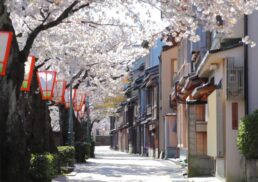The Arab Emirates flag, introduced in 1971, represents UAE’s unity with colors that stand for key values. Designed by Abdulla Mohammed Al Ma’enah, it uses green, white, black, and red. Explore its history, symbolism, and technical details in this article.
Table of Contents
Key Takeaways
The UAE flag, designed by Abdulla Mohammed Al Ma’enah in 1971, symbolizes national unity and independence, uniting the seven emirates under a single emblem showcasing Pan-Arab colors and values.
Each color on the UAE flag—green, white, black, and red—holds specific meanings related to the nation’s heritage, values, and aspirations, with influences drawn from a poem by Safi-u-ddin Al Hali.
Before the unification under the UAE flag, each emirate had its own distinct flag, reflecting their unique identities, tribal affiliations, and local histories.
History of the Arab Emirates Flag

The history of the United Arab Emirates flag is a tale of vision, creativity, and national pride. Designed by Abdulla Mohammed Al Ma’enah in 1971, the flag was born out of a competition organized by Al Diwan Al Amiri Abu Dhabi and published in the Al Ittihad newspaper. At just 19 years old, Al Ma’enah’s design stood out among 1,030 submissions, with only six being shortlisted. His creation was ultimately chosen to represent the newly formed nation, marking a significant moment in the country’s history.
The UAE flag was officially adopted on December 2, 1971, a date now celebrated annually as National Day in the UAE. Sheikh Zayed, the founding father of the UAE, had the honor of being the first to raise the national flag on this historic day. This moment symbolized the unity and independence of the seven emirates, each of which had its own flag before coming together under a single banner.
Evolution of Flags in the Emirates
Prior to their unification under the UAE flag, every emirate in the current United Arab Emirates flew a distinct flag of its own. These historical flags reflected the diverse identities and allegiances of the emirates. For instance, Ajman, Umm Al Quwain, and Fujairah continued to use their individual flags until November 15, 1975, when they replaced them with the federation flag of the UAE.
Each emirate’s flag was a symbol of its heritage and tribal affiliations. These flags varied widely in design, often featuring elements that represented the Hinawi or Ghafiri tribal confederations. The red banner, a common element, signified the Hashemite dynasty and allegiance to the prophet Muhammad. This rich tapestry of historical flags set the stage for the unifying symbol that the UAE flag would become.
Symbolism and Meaning

The UAE flag vividly embodies the nation’s unity, values, and aspirations. Comprising the Pan-Arab colors of green, white, black, and red, the flag symbolizes Arab unity and independence. These colors are not merely aesthetic choices but are deeply rooted in the history and culture of the Arab states. Inspired by a poem by Safi-u-ddin Al Hali, the colors reflect the virtues and ideals cherished by the Arab people:
Green represents fertility, prosperity, and the Islamic faith.
White symbolizes peace, purity, and the UAE’s commitment to tolerance and coexistence.
Black signifies the UAE’s rich oil resources and the strength and determination of its people.
Red represents courage, sacrifice, and the UAE’s commitment to defending its sovereignty and independence.
The flag features a horizontal tricolor of green, white, and black, with a vertical red bar at the hoist. Each color holds its own significance: green for the fertile land and agriculture, white for peace, black for courage and strength, and red for power and sovereignty. Together, these colors form a powerful emblem of the UAE’s identity and values.
Pan-Arab Colors
The design of the UAE flag is inspired by a poem by Safi-u-ddin Al Hali, wherein each color symbolizes a virtue. This poetic influence is evident in the choice of the Pan-Arab colors:
Green
White
Black
Red
These colors are a common thread in the flags of many Arab nations, particularly in the Middle East, symbolizing their shared history and aspirations.
The colors of the UAE flag have specific meanings:
Green represents the land, symbolizing goodness and agriculture
White stands for peace, reflecting the UAE’s actions and aspirations
Black embodies courage and power, signifying the country’s strong will
Red symbolizes power and sovereignty, historically referring to swords and weaponry
These colors together create a visual narrative of the UAE’s commitment to unity, peace, and strength, all framed within a white border.
Representation of Unity and Values
The UAE flag is more than just a national emblem; it is a representation of the country’s unity and core values. The colors symbolize the unity of the Arab nations, reflecting a shared heritage and collective aspirations. This unity is a cornerstone of the UAE’s national identity, fostering a sense of belonging and pride among its citizens.
The design of the flag also emphasizes the country’s values of benevolence, courage, and historical significance of battles. These values are deeply ingrained in the UAE’s culture and are reflected in the nation’s policies and actions. The flag serves as a constant reminder of these principles, inspiring the people to uphold and cherish them.
Technical Specifications
The UAE flag’s design is meticulously detailed, with specific proportions, color codes, and construction guidelines. The flag features three horizontal bands of green, white, and black from top to bottom, with a vertical red band next to the mast; the proportion of the national flag is 1:2. Various sizes are available, including 2’ x 3’, 3’ x 5’, 4’ x 6’, 5’ x 8’, and 6’ x 10’.
The accurate representation of the flag’s colors is of utmost importance. The color codes include Pantone 348 for green, Pantone Black, and Pantone 186 for red. The CMYK values are green: 100/0/100/15, black: 10/0/0/100, and red: 0/100/100/0. The RGB values are green: 0/115/47, black: 0/0/0, and red: 255/0/0, with hexadecimal values being green: #00843D, black: #000000, and red: #FF0000. These specifications ensure that the flag maintains its vibrant and accurate appearance.
Material and Construction
Given the harsh UAE climate, the flag is usually made from durable materials such as nylon. High-quality materials such as 200 denier SolarMax® nylon and 100 denier duplex polyester are used to ensure the flag’s durability and vibrant colors. These materials are chosen for their ability to resist fading and wear, maintaining the flag’s pristine appearance over time.
The flag also includes features like brass grommets for secure attachment. These grommets provide a sturdy and reliable way to hoist the flag, ensuring it flies proudly in various conditions.
The flag is available in different dimensions, such as 2ft. x 3ft. to 5ft. x 8ft. for outdoor flags and from 3ft. x 5ft. to 4ft. x 6ft. for indoor flags, catering to different display needs.
Flags of the Seven Emirates
Before uniting under the UAE flag, every one of the seven emirates had a unique flag of its own. These flags were symbols of their individual histories, tribal affiliations, and allegiances. The flags of the emirates were associated with either the Hinawi or Ghafiri tribal confederations. Many of these flags included a red banner, symbolizing the Hashemite dynasty and their loyalty to the prophet Muhammad.
The flags of the emirates in the UAE are as follows:
Abu Dhabi: Red field with a white rectangle at the top-left corner.
Ajman: Red field with a vertical white bar at the hoist side.
Dubai: Red field with a vertical white bar at the hoist side.
Fujairah: Plain red field before 1952 and from 1961 to 1975.
Ras Al Khaimah: Red rectangle on a white background.
Sharjah: Red rectangle on a white background.
These flags reflect the rich heritage and unique identities of each emirate.
Unique Features of Each Emirate’s Flag
Each of the seven emirates’ flags has unique features and designs, reflecting their distinct histories and allegiances. The flag of Abu Dhabi, for instance, features a red field with a white rectangle at the canton, symbolizing its historical maritime power. Ajman and Dubai share a similar design with a red field and a white bar at the hoist.
The flags of the emirates have unique features that highlight their diverse cultural and historical backgrounds:
Sharjah and Ras Al Khaimah’s flags are known as the White Pierced Red flag, linked to their historic maritime power.
Fujairah’s flag from 1952 to 1961 had its name written in white Arabic calligraphy on a red field.
Umm Al Quwain’s flag includes a red field with a white bar at the hoist and a white star and crescent in the center, symbolizing allegiance to the Islamic world.
These unique features highlight the diverse cultural and historical backgrounds of oh our emirates.
National Anthem “Ishy Bilady”
The UAE’s national anthem, “Ishy Bilady,” or “Long Live my Country,” is a powerful tribute to the nation’s spirit and dedication. This anthem resonates with a vow to build and work earnestly for the country, encapsulating the collective aspirations and determination of the UAE’s citizens.
“Ishy Bilady” also expresses a profound commitment to protect the nation and sacrifice for it with blood and souls. This anthem is a powerful reflection of the UAE’s values and the unwavering loyalty of its people, serving as a source of inspiration and pride.
Display and Usage Guidelines
Specific guidelines govern the correct display and usage of the UAE flag, ensuring it is always treated with the respect it deserves. When displayed horizontally, the red strip should be to the left near the pole, with green on top. When hoisting multiple flags, the UAE flag should be on the far left or in the middle if the number of flagpoles is odd.
During speeches, the UAE flag should be placed on the left side of the podium, just behind the speaker’s right. On ships, it should be hoisted from the center while sailing and from the stern when docked. Flags that are damaged or discolored should not be raised and must be replaced, with official displays being replaced every six months to maintain their condition.
During national holidays, the plain red flag with horizontal stripes can be displayed on light-posts horizontally with the red part on top, ensuring it is not mistaken for a white flag.
Weather Considerations
Weather conditions significantly affect the appearance and durability of the UAE flag. The dyes used for the flag’s colors should be chosen with local weather conditions in mind to prevent fading. Regularly changing the flags is recommended to maintain their pristine look, ensuring that they continue to represent the nation with dignity and respect.
It is also advisable to avoid using the flag during inclement weather conditions to prevent damage. By adhering to these guidelines, the flag remains a vibrant and enduring symbol of the UAE’s identity and pride.
Download UAE Flag Images

For those who wish to use the UAE flag in their projects, free images in various sizes and formats are available for download. These images can be found in sizes ranging from small (30x15px) to high resolution (3000x1500px). Websites like Freepik offer downloadable UAE flag images in various designs, including realistic and flat styles, suitable for diverse design needs.
The images are royalty-free, so you can use them for:
personal and educational purposes
projects
presentations
websites
While attribution is appreciated, it is not required, providing flexibility for users. Whether for personal use or educational purposes, these resources make it easy to display the UAE flag with pride.
Embedding the UAE Flag on Websites
You can easily embed the UAE flag on a website by using simple HTML code snippets. By specifying the image source and dimensions within the HTML code, you can easily display the flag on your site.
For instance, a small flag icon can be embedded using the following code:
For a medium-sized flag, you can use:
These snippets allow for easy customization and ensure the flag, with its symbolic white stripe, is displayed correctly, enhancing your website with a symbol of national pride.
Custom Flag Design Services
Custom flag design services are available for those in search of personalized flags and banners. Companies like Flagmakers and Custom Flag Company offer tailored flag designs and manufacturing. These services cater to both individual and corporate accounts, providing:
Custom banners
Flags
Tents
Feather flags
Table throws
Runners
With different finishing options such as canvas headers and brass grommets, these flags are crafted to meet specific needs and preferences. The lead time for custom flag orders is typically around two weeks from proof approval to delivery, ensuring timely and high-quality products for various occasions.
Trivia and Fun Facts
The UAE flag carries numerous intriguing anecdotes and lesser-known traditions that delve deeper into the country’s history and culture. For instance, an unofficial rule in the UAE suggests that citizens should check their flags every 45 days to ensure they are in good condition. This practice underscores the importance placed on maintaining the flag’s pristine appearance as a symbol of national pride.
There are numerous other fascinating facts related to the UAE flag, including its prominent display on the world’s tallest building, the Burj Khalifa. These stories and practices illustrate the deep reverence and respect the UAE people have for their national emblem.
Related Flags
A study of related flags offers a historical perspective on the region presently known as the UAE. One notable example is the Trucial States Council flag, used from 1968 to 1971. This flag featured a horizontal tricolor of red, white, and red with a green seven-pointed star in the center, symbolizing the unity of the Trucial States.
During Portuguese rule, the UAE region also used several flags featuring the royal coat of arms of Portugal on a white field. These historical flags offer a glimpse into the past, highlighting the region’s diverse and rich heritage before the formation of the UAE.
Summary
The UAE flag is a powerful symbol of national unity, pride, and heritage. From its inception by Abdullah Mohammad Al Maainah to its adoption on December 2, 1971, the flag has come to represent the collective identity of the seven emirates. The Pan-Arab colors of green, white, black, and red reflect the values and aspirations of the UAE, while the technical specifications ensure its durability and vibrant appearance.
Understanding the proper display and usage guidelines, as well as exploring the individual flags of the seven emirates, deepens our appreciation for the UAE flag. Whether you’re downloading images, embedding the flag on a website, or seeking custom flag designs, the UAE flag remains a proud emblem of a nation’s history and unity. Let this symbol inspire you to cherish and uphold the values it represents.
Learn more, visit Flag of the United Arab Emirates | Meaning, Colors & History.
Frequently Asked Questions
Who designed the UAE flag?
The UAE flag was designed by Abdullah Mohammad Al Maainah in 1971 when he was just 19 years old.
What do the colors of the UAE flag represent?
The colors of the UAE flag represent Arab unity, independence, peace, courage, power, and sovereignty.
How is the UAE flag displayed during a speech?
During a speech in the UAE, the flag should be displayed on the left side of the podium, just behind the speaker’s right, as a sign of respect and protocol.
Where can I download free images of the UAE flag?
You can download free images of the UAE flag from websites like Freepik, where they are available in various sizes and formats and are royalty-free for personal and educational use.
What are the technical specifications of the UAE flag?
The UAE flag has a 1:2 proportion, uses specific color codes such as Pantone 348 for green, Pantone Black, and Pantone 186 for red, and is made of durable materials like nylon with brass grommets for attachment.









